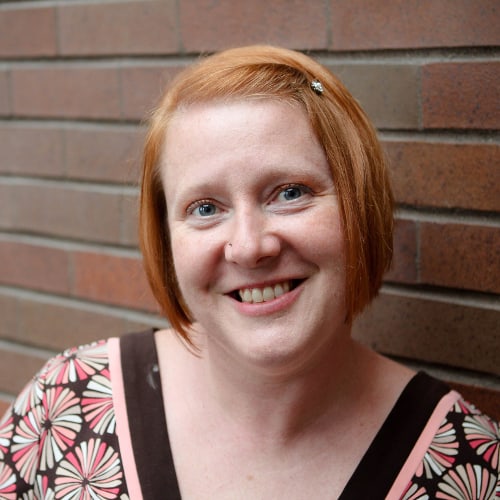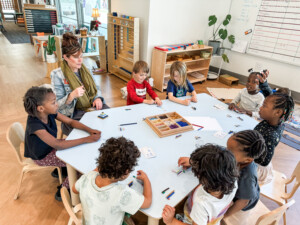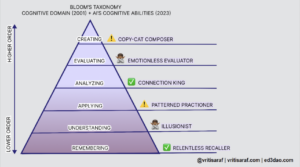Do You Want To Be A Thought Leader?

Recently, I applied to be “verified” by Twitter. A friend had mentioned that I should apply, particularly if I wanted to grow my following and promote my writing.
The purpose (for those, like me, who had never heard of such a thing) is for Twitter to check out who you are and either give you a blue verified badge or not. In order to decide who should be “verified,” Twitter explains these parameters: “If the account represents a person, we want to understand their impact in their field.”
I know the suspense is killing you, so I’ll let you off the hook. I am not blue ribbon verified. Yet.
What Twitter is doing, in a sense, is measuring whether or not you are a “thought leader.” This phrase makes me shift in my seat a little bit. My first reaction is that “thought leader” is just some more jargon to add to the clutter in my head. The second thought is that I want to be one! Who wouldn’t want to be known for their influence and expertise in their field?
The interesting part of my application process was trying to figure out how to say “I’m kind of a big deal” while all the while wondering if it is true or not. At the same time, I was trying not to feel like a jerk bragging about my number of followers, friends, readers, subscribers, etc. Even describing it sounds icky.
However, in 20 days I’ll be filling out the application again, as you are required to wait 30 days before resubmitting. Am I dying to be verified? There’s a yes and no answer to that. Yes, I want to be verified as a thought leader in my field. No, I don’t think this is the only measure, or maybe even a reliable one. But, it is attempting to do something that is important for educators to embrace:
Claim your place at the table (a digital one, in this case), and own the decisions you make as a professional who is worthy of being imitated.
How do you get started? Here are three ways teachers can begin working towards becoming recognized thought leaders:
1. Share
There are so many ways to share what we are doing in our classrooms, but one of the best ways I know is through sharing lesson plans and resources. My own personal experience with ShareMyLesson is extensive. I’ve uploaded a few hundred resources I use. Some of them are really good, and others are there more to save someone the work from creating yet another rubric. Teachers can download my resources and use them as their own. ShareMyLesson aligns the lesson to Common Core Standards and is searchable in several different ways.
Teachers Pay Teachers is also a site that many of my colleagues use. It requires teachers to pay a small fee for the right to use the materials, and by valuing another colleague’s work enough to pay for it, we are making a statement about that teacher’s lessons.
In addition to using websites, teachers should utilize Pinterest to build boards to showcase their own lessons and materials, but also to find excellent, teacher-made, tried and true activities. With tools like Wix (that’s what I use for my website), Blogger and WordPress also at our disposal, we can build our own websites or create a blog.
People ask me all the time about writing and I always say the same thing: “You are an expert in your classroom. Write about it.” The truth is teaching is immensely isolating, and one of the reasons I write is to have conversations with other teachers about the things I am doing. I love when people send me links to the work they are doing because it builds a sense of community.
As a bonus, when we share student work (with their permission of course), we are demonstrating to the larger community the amazing things that our students are doing. Many adults have very one-dimensional views of teenagers, but we know they are talented artists, musicians, writers, coders, graphic designers and thinkers. See some of my students’ work here.
2. Support
We all know someone who could use a hand. We’ve all needed a hand. You don’t have to announce, “Hello. I’m a thought leader, so I decided I’d drop some knowledge on you.” Instead, have conversations with each other and when you see a need, fill it.
If a teacher tells you they want to do some cross-curricular work, introduce them to a like-minded and willing friend. If there’s someone who says they’d like to try an activity that you do, invite them to see how you run it. If you know that a certain strategy works with a problematic student, share that with the student’s other teachers.
You aren’t being a know-it-all. You are being a colleague. Teachers need to stick together, and we all bring different talents to this occupation.
Another highly under-utilized way to support each other is through simple compliments. I don’t know why, but most people are not very good at doling out compliments about things other than cute outfits and new haircuts, which is pretty depressing. I make it a point to tell my colleagues when I think they are great at something. Sam knows special education law inside and out. Megan can talk to parents like no one else. Denise has the long view of the work we do, and she can always put things in perspective.
These are real people and their actual, specific talents. It seems to me that we have a hand in the community we create in our buildings, and who doesn’t feel better when complimented? Teaching is a science and an art, and when we see someone doing either well, let’s tell each other. In Randy Pausch’s “Last Lecture” (which is usually hypothetical, but in his case he had pancreatic cancer) he says that a good compliment can keep a person going for days, and I see this played out all the time.
3. Synergize
There are some people who can just bring energy to what they touch. Dave Burgess of Teach Like a Pirate fame, Alice Keeler’s amazing enthusiasm around all things authentic and Google, and the Chief Knowledge Officer of CASEL (Collaborative of Academic, Social, and Emotional Learning), Roger P. Weissberg come to mind.
We live in an amazing time when anyone with an internet connection can reach out to those whom we admire and gain momentum from those interactions. If I see something I love, like #OneWord365, I’m able to find hundreds and hundreds of like-minded people to be in my “tribe.” By gaining positive energy and collaborating, the many faces of the profession can synergize and make us all better.
As I consider these avenues, being a thought leader seems not only important but vital to educators’ and education’s future. We must share, support and synergize to propel teachers and the profession to the forefront of the community, marking us as thought leaders on topics that pertain to education. We can’t allow those with louder voices to be portrayed as the thought leaders because the rest of us are isolating ourselves.
When the world looks around for an opinion, it should find an educator willing to take the seat at the table and say confidently, “This is what I do” and “Here’s how to . . .” and “This is crucial because . . .” In the end, our profession is in need of many thought leaders.
I’m going to be one, and I hope you will too, blue certified or not.
For more, see:
- Three Tips for Stoking the Fires of Overachievers
- Preparing Students For Future Success with PBL and SEL
- Project Management Solutions for the 21st-Century Student
Stay in-the-know with all things EdTech and innovations in learning by signing up to receive the weekly Smart Update.








0 Comments
Leave a Comment
Your email address will not be published. All fields are required.